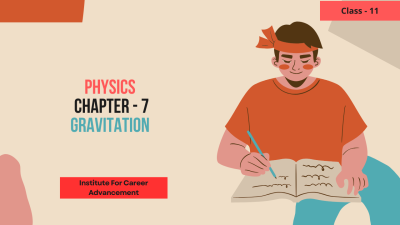Semi Conductor Electronics : Material Devices And Simple Circuits - Class 12
In Class 12, Semiconductor Electronics: Materials, Devices, and Simple Circuits dives into the exciting world of how special materials called semiconductors form the foundation of modern electronic devices! Here's a quick glimpse: Building Blocks: The course starts by introducing semiconductors, materials with conductivity between conductors (metals) and insulators (plastics). You'll learn about silicon and germanium, the most common semiconductors. Doping: The Magic Touch: Get ready to explore the concept of doping, where tiny amounts of impurities are added to a pure semiconductor to alter its conductivity. This "doping magic" creates two crucial types of semiconductors: p-type and n-type. The P-N Junction: The Heart of It All: This course delves into the heart of semiconductor electronics – the p-n junction. It's the meeting point between p-type and n-type semiconductors, exhibiting unique electrical properties that form the basis of various electronic devices. Diodes: One-Way Streets for Current: You'll explore diodes, fundamental devices that allow current to flow in one direction only. Understanding their operation is crucial for various electronic circuits. Beyond Diodes: Exploring Devices: The course expands your knowledge to other essential semiconductor devices like transistors, the workhorses of modern electronics. Transistors can amplify signals and act as electronic switches, forming the building blocks of integrated circuits (ICs). Simple Circuits: Putting it All Together: You'll learn how to analyze and design simple circuits using diodes, transistors, and other electronic components. This hands-on approach helps you understand how these devices work together in practical applications. দ্বাদশ শ্রেণিতে, সেমিকন্ডাক্টর ইলেকট্রনিক্সঃ উপাদান, ডিভাইস এবং সিম্পল সার্কিটগুলি কীভাবে সেমিকন্ডাক্টর নামে বিশেষ উপকরণগুলি আধুনিক বৈদ্যুতিন ডিভাইসগুলির ভিত্তি তৈরি করে তার উত্তেজনাপূর্ণ জগতে ডুব দেয়! এখানে একটি দ্রুত ঝলকঃ বিল্ডিং ব্লকঃ কোর্সটি অর্ধপরিবাহী, কন্ডাক্টর (ধাতু) এবং ইনসুলেটরগুলির মধ্যে পরিবাহিতা সহ উপকরণগুলি প্রবর্তন করে শুরু হয়। (plastics). আপনি সবচেয়ে সাধারণ অর্ধপরিবাহী সিলিকন এবং জার্মেনিয়াম সম্পর্কে শিখবেন। ডোপিংঃ দ্য ম্যাজিক টাচঃ ডোপিংয়ের ধারণাটি অন্বেষণ করার জন্য প্রস্তুত হন, যেখানে বিশুদ্ধ অর্ধপরিবাহীতে তার পরিবাহিতা পরিবর্তন করতে অল্প পরিমাণে অমেধ্য যোগ করা হয়। এই "ডোপিং জাদু" দুটি গুরুত্বপূর্ণ ধরনের অর্ধপরিবাহী তৈরি করেঃ পি-টাইপ এবং এন-টাইপ। পি-এন জংশনঃ দ্য হার্ট অফ ইট অলঃ এই কোর্সটি সেমিকন্ডাক্টর ইলেকট্রনিক্সের কেন্দ্রবিন্দুতে প্রবেশ করে-পি-এন জংশন। এটি পি-টাইপ এবং এন-টাইপ সেমিকন্ডাক্টরগুলির মধ্যে মিলন বিন্দু, যা বিভিন্ন বৈদ্যুতিন ডিভাইসের ভিত্তি গঠন করে এমন অনন্য বৈদ্যুতিক বৈশিষ্ট্য প্রদর্শন করে। ডায়োডঃ বর্তমানের জন্য একমুখী সড়কঃ আপনি ডায়োড, মৌলিক যন্ত্রগুলি অন্বেষণ করবেন যা কেবলমাত্র এক দিকে বিদ্যুৎ প্রবাহিত করতে দেয়। বিভিন্ন ইলেকট্রনিক সার্কিটের জন্য তাদের ক্রিয়াকলাপ বোঝা অত্যন্ত গুরুত্বপূর্ণ। ডায়োডের বাইরেঃ যন্ত্রগুলি অন্বেষণ করাঃ কোর্সটি আপনার জ্ঞানকে ট্রানজিস্টর, আধুনিক ইলেকট্রনিক্সের ওয়ার্কহর্সের মতো অন্যান্য প্রয়োজনীয় সেমিকন্ডাক্টর ডিভাইসে প্রসারিত করে। ট্রানজিস্টরগুলি সংকেতগুলিকে প্রশস্ত করতে পারে এবং বৈদ্যুতিন সুইচ হিসাবে কাজ করতে পারে, যা ইন্টিগ্রেটেড সার্কিটগুলির বিল্ডিং ব্লক তৈরি করে। (ICs). সহজ সার্কিটঃ সব একসাথে রাখবেনঃ ডায়োড, ট্রানজিস্টর এবং অন্যান্য বৈদ্যুতিন উপাদান ব্যবহার করে কীভাবে সাধারণ সার্কিটগুলি বিশ্লেষণ এবং ডিজাইন করা যায় তা আপনি শিখবেন। এই হ্যান্ডস-অন পদ্ধতি আপনাকে বুঝতে সাহায্য করে যে কীভাবে এই যন্ত্রগুলি ব্যবহারিক প্রয়োগগুলিতে একসঙ্গে কাজ করে।
English
Last updated
Wed, 27-Nov-2024



















